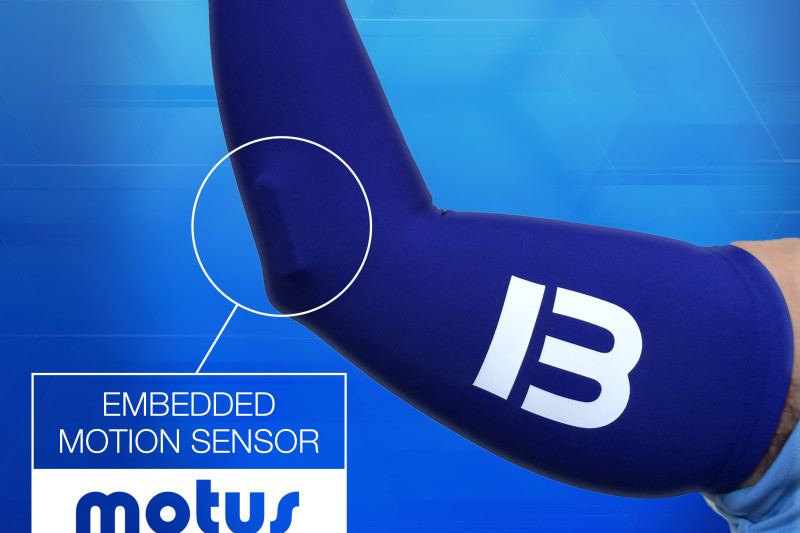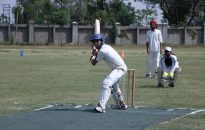In the wake of a season that began with major arm injuries to prominent pitchers Shane Bieber, Spencer Strider and Eury Pérez, Major League Baseball has issued a report to the front offices of all 30 clubs citing an increase in velocity, an added emphasis on generating movement, and the proliferation of pitchers throwing at […]

In the wake of a season that began with major arm injuries to prominent pitchers Shane Bieber, Spencer Strider and Eury Pérez, Major League Baseball has issued a report to the front offices of all 30 clubs citing an increase in velocity, an added emphasis on generating movement, and the proliferation of pitchers throwing at maximum effort as the primary culprits behind the sport’s ongoing injury crisis.
Advertisement
“Injury rates among pitchers have skyrocketed over the past several decades,” reads the report, a 63-page document that represented the summation of more than 200 interviews conducted during the past year with executives, coaches, trainers, surgeons, representatives from amateur baseball and former big-league pitchers. The purpose of the study, MLB officials said, was to spur conversation about a topic that tends to engulf the sport every April.
The study cited additional factors at the professional and amateur level that have contributed to the increase in arm ailments. The number of surgeries to repair the ulnar collateral ligament in the elbow rose from 104 between the majors and the minors in 2010 to 281 in 2024. This past season began with the loss of high-profile pitchers, like Bieber, Strider and Pérez. The World Series champion Los Angeles Dodgers were so beset by pitching injuries this past season that the organization ordered an offseason audit of its developmental practices.
There are no easy solutions, the MLB report explained. The document is light on prescriptions. The report includes the suggestion that MLB rules “could be adjusted or designed to encourage or require starting pitchers to preserve enough energy to allow them to pitch deeper into games,” but does not offer specifics. In addition, there could be more restrictions on how often teams make roster moves with pitchers.
The study, which was run by MLB vice president for amateur and medical baseball operations John D’Angelo, does not include interviews with current big-league players. The Major League Baseball Players Association has engaged with MLB officials about a joint study that would involve input from active players, according to MLB and MLBPA officials who requested anonymity in order to speak freely about the situation. The report called for “a detailed examination of offseason training regimens and early-season workloads,” indicating that arm injuries tend to spike at the start of each season.
Advertisement
At the center of the dilemma is heightened velocity. The average four-seam fastball clocked at 91.3 mph in 2008. That average rose to 94.2 mph in 2024, with corresponding increases in the velocity of offspeed pitches. The rising tide matches the growing realization that faster pitches, of all kinds, are harder to hit.
“That’s why you see these guys throwing 87 mph sliders now,” one big-league executive told The Athletic earlier this year, as part of a series on the rise of strikeouts. “It might have fringe-y spin and movement. But the fact that it’s hard makes it miss bats.”
The MLB report outlines a vicious cycle: Players at the big-league level are incentivized to throw as hard as possible with as much movement as possible. Players in the minors pursue the same practices in order to get promoted. Players in college and high school attempt to mimic those attributes in order to get drafted. Children in youth baseball do the same in search of travel-ball opportunities and college scholarships; children in Latin America likewise do so in hopes of signing with a big-league club.
“The current generation of amateur players … tries to emulate how they view professionals training and performing,” the report reads.
This cycle “poses a unique risk to young, amateur players,” who often lack access to high-quality trainers and coaches, according to the report. The pursuit of velocity leads to more amateur arm injuries, which leads more players to enter the professional ranks having already undergone surgery and thus are more susceptible to future injury.
“I have a 14-year-old who played travel ball last summer into the fall,” Athletics general manager David Forst said at the general managers’ meetings in November. “He had three pitchers on his team by August who were unavailable because of arm injuries. I mean, those aren’t Tommy John surgeries — but they’re kids with arm problems.”
Advertisement
At the professional level, the report outlines, exacerbating the problem is the usage of ball-tracking technology. That includes innovations like Edgertronic cameras, Rapsodo monitors and Trackman radar systems, which permit pitchers to chase the maximum velocity and the maximum amount of movement on individual pitches, potentially placing the arm in unnatural positions. The technology also allows teams to monitor bullpen sessions with a level of scrutiny that was once reserved for actual games.
Because teams might become alarmed when a pitcher’s performance wavers, players are now motivated to operate at higher levels of effort in those once-relaxed settings.
The access to granular data also allows teams and players to reshape pitches on a daily basis. In recent years, pitchers have embraced the splitter, which was once mothballed for fear of injury risk, and pioneered the sweeper, a horizontal-moving slider variant that some within the industry have condemned. All of these pitches, along with fastballs and curveballs and changeups, are thrown as hard as possible, because they generate better results.

Spencer Strider’s 2024 season ended before it could truly take off due to an arm injury. (Icon Sportswire via AP Images)
In turn, some trainers interviewed in the report indicated they found pitchers have over-emphasized strength training and de-emphasized cardiovascular conditioning, which may contribute to the problem.
“Pitchers increasingly throw near maximum effort in accordance with modern baseball strategies that prioritize the pursuit of swings and misses over inducing weak contact from batters,” the report reads.
Rather than offer concrete solutions, the report emphasizes the importance of ongoing dialogue and more research. The trouble comes in reshaping a system in which all of the actors — from amateur players all the way up to the major leagues — are behaving rationally. Pitchers are rewarded for throwing harder, with heightened movement, at maximum effort, because it’s effective.
In other words, a healthy pitcher with a 5.00 ERA still has a 5.00 ERA.
Advertisement
Near its conclusion, the report reads, “many experts agreed that creating a system where pitchers are encouraged or required to moderate their activity and throw at sub-maximum effort to go deeper into games may be better for pitcher health.”
That may be better for the pitcher’s health. The problem, as those involved in this process understand, is it won’t necessarily help the club win games.
(Top photo of Strider: AP Photo / Brynn Anderson)














